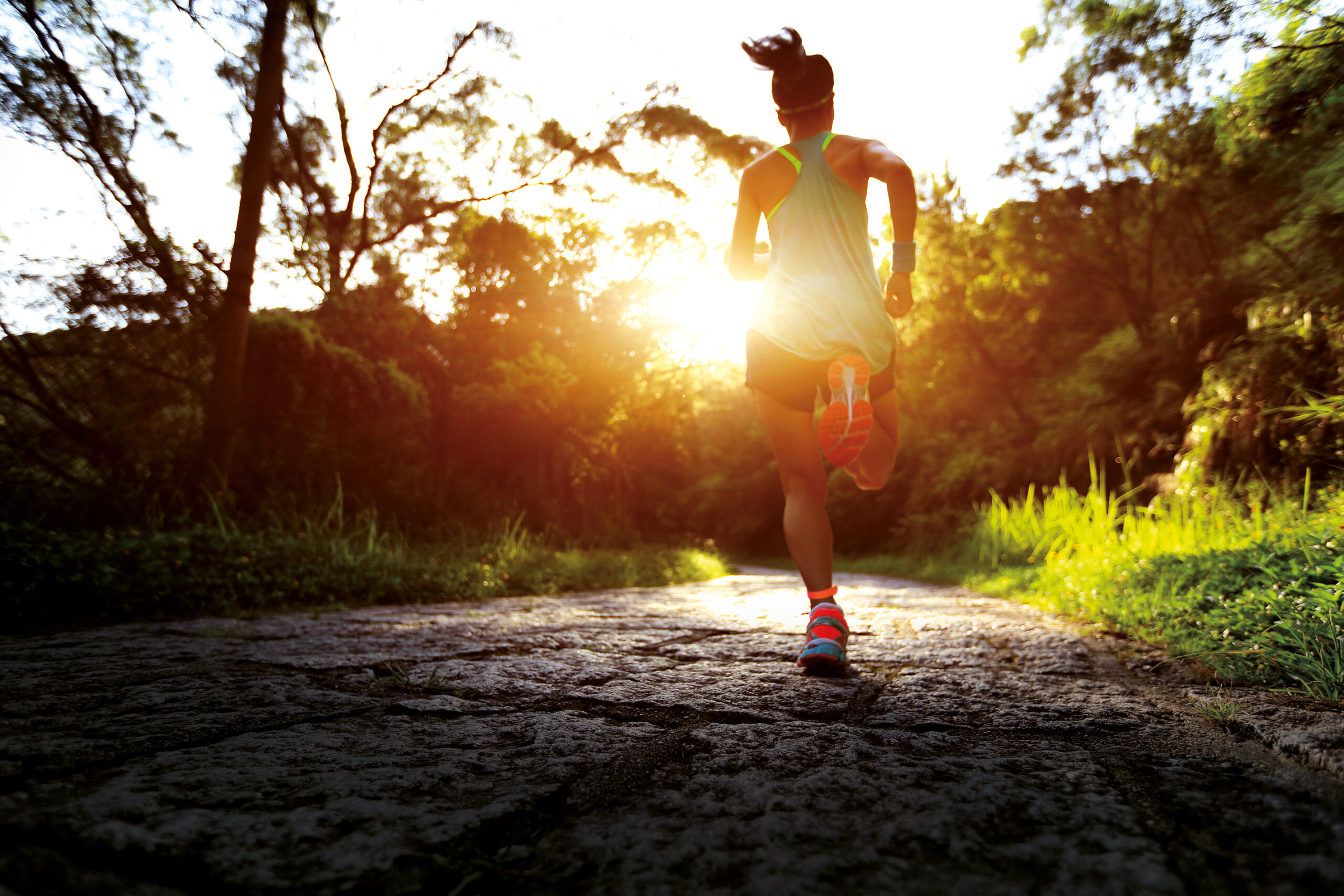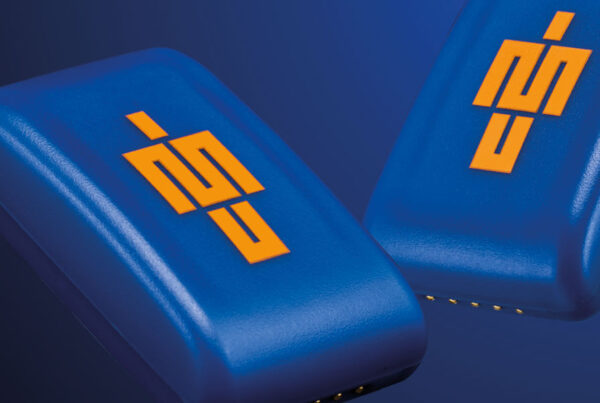The return to running process can be a frustrating one for any athlete post-injury. But that is especially the case when your sport is cross-country. The rehabilitation team at the University of California San Diego had a cross country athlete who had a Haglund’s deformity and had been battling Achilles pain for three years. Director Rehabilitation Science at University of California San Diego (UCSD), Allison Pastor, and now Assistant S&C Coach at LSU who previously worked at UCSD, Lauren Green was tasked with making sure this athlete returned safely to sport.
The timing of the injury was unfortunate as the Covid pandemic had just hit, making compliance tough and forcing all rehab to be done over Zoom; but with the help of IMU-Step they were able to successfully rehab their athlete for a healthy and productive season. Continue reading to learn how.

Buy-in during the pandemic
“We started using IMU in January or February 2019 and then Covid hit”, Allison said. “We had 4 remote rehab cases while we were in the thick of the pandemic and had tried to use the IMU devices with three of the four.”
“We really struggled with compliance as athletes were being trained through a Zoom session and enthusiasm really dropped across the board. We got snippets of information but never had the capacity within that time to get IMU up to its full potential.”
“When we got back to campus we continued to use IMU with a highly motivated, third year cross country, track distance runner”, Allison continued. “It was very eye opening because her compliance was next level and she wanted to know every part of the process.”
It was during the rehabilitation of this cross country athlete that Allison and Lauren saw the power of IMU Step in how they could manage a return to running rehabilitation.
Making immediate asymmetry changes with live data
“We learnt that especially with distance runners, they have the mindset that the more data they can get their hands on, the better. They crave it. It was so valuable in modulating recovery days and so eye opening in the impact we were having on the care that we provided before and after her runs. It was validating the treatments that we were providing.”
Getting the coach involved early in the rehab process really helped gain buy-in. It was during a live session on a treadmill that the coach’s knowledge of the sport and athlete was married with objective data to provide incredible insights.
“The biggest eye opener was during the first session which was a live session on a treadmill and she hadn’t been running for 4 months. Lauren, the head coach and I were there and she was measuring at 11% asymmetry. Using our eyes as well as the data, we were able to cue her into a 6% asymmetry pretty instantly. She could feel those changes and began to really understand the impact as we showed her the data during rest periods.”
“We are trying to get really objective here at UCSD in our treatment and RTP criteria and evaluation strategies but this tech has given us a lot of bang for buck. Collecting data live is great but even if that’s not possible, we can send the athletes on the road with the IMUs and it’s so easy to get the data and evaluate what you are doing as a clinician.”

Objective data to support athlete subjectives
The damage to the Achilles tendon was pretty significant. This led to a very interesting description by the surgeon post surgery.
“The surgeon said that the Achilles looked like string cheese. As a clinician, when I hear that there is tendon damage, I just want to get in there and build up some eccentric and isometric strength in the tendon. We would do a lot of that before the runs but I quickly realised that it wasn’t helping as we saw the asymmetry increase due to the increased loading. It just wasn’t working for her.”
“We decided to focus on mobility of the foot and ankle alongside a posture series pre-running with the strength work after the run instead. Then we made a real breakthrough by also including a swim session within the programme. That led to her asymmetries declining significantly in the days following the swim and mobility.”
Clinicians are driven by the research. But often it’s the athlete that can provide the insight needed to put the cherry on the cake of a rehab program.
“In this use case, the athlete knew best. She almost self modulated herself into the right pattern. When we gave her a menu of options from which she could choose from, she got it spot on. She came to understand how many days she could run, exactly when she needed the swim recovery, when she needed soft tissue work etc. IMU validated that she knew best.”
“There’s not many athletes who know their body like her. The devices gave me some assurances that when you’re working with a team or athlete that you have a strong rapport with, its good to listen and take a step back. It was great to get the validation that we’re going in the right direction.”

Integrating inertial sensors with other data streams
As well as using IMU Step on a daily basis, Lauren and Allison were collecting daily RPE and wellness data, weekly jump assessments and monthly musculoskeletal assessments.
“The athlete was extremely engaged and the data collection process became a personal diary for her. It allowed her to understand the daily fluctuations in how she was feeling and performing”, Lauren explained. “She said that, ‘as an athlete, you don’t want to complain but it made it easier to tell coaches what she was feeling.”
“And the coach loved the additional data. He actually asked if he could have IMUs on all his runners.”
“As well as using IMU Step daily, we were also utilising jump testing on a weekly basis. We tried to jump test after each recovery day to get an insight into how the last week of stimulus had affected her. We did a CMJ without arm swing, a single leg CMJ, a 10 hop pogo repeated hop and also a single leg version. We introduced an arm swing and rebound CMJ to see how she would handle increased loads as we were progressing further on with her running and getting back to ‘normal’. Could she go from return to sport to increasing her stiffness and power profile. Or were those things taking a hit as she increased her running load?”
Allison and Lauren often used different surfaces to alter the load and type of load that was placed on the athlete. Using IMU Step while running on different surfaces allowed the team to objectively understand how that load differed.
“We had phases of her rehab that focused on running on different terrains; grass, stairs, road, sand”, Lauren explained. “With that we were able to get a feel for how the different terrains affected the Impact Load. That then allowed us to control volume and intensity and therefore Impact Load. We were able to use the stairs pretty effectively based on this data. Although mechanical work would go up using the stairs, the Impact Load decreased. But then we were able to use the descent to increase the Impact Load through single leg drops etc.
“It gave the coach so much more control as he didn’t just have distance and speed in his armory to programme from.”
To further understand how this athlete reacted to increases in intensity and volume through her rehabilitation, Lauren and Allison performed a speed profile on the treadmill. This allowed them to programme more effectively.
“On a treadmill we increased the velocity every minute over a mile. That allowed us to bucket the loads at each velocity. Anecdotally with her, myself and a couple of our interns, we found that there was a tipping point at a given running speed where impact load jumped per step. That was also the same with asymmetry. This gave us a point from which to work. Do we want to work one side to induce some fatigue and adaptation or do we want to decrease a certain stress?
Using IMU Step at UCSD has not only given Lauren and Allison confidence that they were progressing this athlete at the right speed with the right stimulus, but provided the coach with additional objective data from which to program sessions. Combining daily IMU Step data with RPE, wellness and jump data has provided much needed objectivity to guide this athlete to a successful return to running.
Learn more
This case study builds on concepts we’ve explored in-depth at IMeasureU. Follow the links below to learn more –
Practical Examples of Using IMU-Step to Modify Outcomes: Asymmetry and Impact Load in the Real World – a webinar with Andrew Gray
Understanding External Biomechanical Load During ACLR Rehabilitation – A webinar with Mark Armitage
Set Up for Success with Inertial Data – A Case Study with the Wests Tigers
Have an injured athlete? Get in touch with us and ask about a free demo of IMU Step to see how we can help your return to play.




